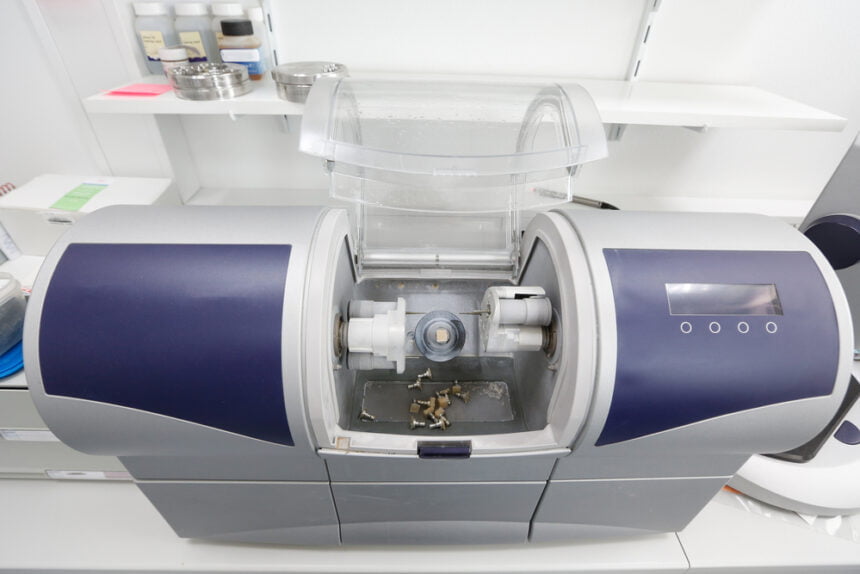Dental implants are not a new concept — in fact, the ancient Mayans and Egyptians made makeshift implants out of shells and ivory as far back as 600AD. Implants as we know them today, though, didn’t make their appearance until 1956. PI Branemark, a scientist from Sweden, was trying to create easily removable screws for a variety of surgical repairs — but when he tried to remove the screws, he found them fused to the surrounding bone. Thus, the modern dental implant was born. While teeth might not have changed much in the last 40 years or so, dental implants have definitely seen some improvements from their first use back in the 1960s. Dental implants are set to become a $4.4 billion industry by 2020. What innovations have recently rocked the dental implant industry?
Dental Implants As We Know It
Dental implants offer several benefits, including improved chewing and speech capabilities, enhanced appearance, and the preservation of bone structure in the jaw. They are a long-lasting solution for replacing missing teeth and can provide patients with a comfortable and functional smile.
Innovations in implant shape, surface texture, and thread patterns have improved initial stability and bone integration. Using biocompatible materials has greatly contributed to the success of dental implants. Titanium implants are well-tolerated by the body and promote osseointegration, where the implant fuses with the surrounding bone tissue. Zirconia implants have gained popularity due to their tooth-like color and potential for better esthetics, particularly in the anterior region of the mouth.
Advances in digital imaging techniques, such as cone-beam computed tomography (CBCT), allow for precise 3D imaging of the jawbone. This helps in accurate treatment planning, reducing the risk of complications and improving the success of implant placement. On the other hand, CAD/CAM technology has revolutionized the creation of custom-made abutments and dental crowns. It enables highly accurate and aesthetically pleasing restorations that fit perfectly with the patient’s natural teeth.
Computer-guided implant surgery uses 3D imaging and computer software to plan and execute implant placement with extreme precision. This reduces surgery time, minimizes trauma, and enhances the overall patient experience.
A Growing Industry
Dental health is better now than at nearly any time in human history — though much of this attributes to the use of fluoride in water and toothpaste. According to the CDC, the Baby Boomer generation is the first that will keep their natural teeth well into their golden years – but problems still persist. Nearly half of all adults older than 30 have some sort of gum disease — and roughly 30 percent of seniors have lost all of their natural teeth, increasing the need for implants. Natural tooth loss isn’t the only reason that patients seek out dental implants in place of dentures or other appliances — they’re more comfortable after the healing period, look more natural and enable the patient to eat a variety of foods that would be impossible to consume with dentures. This is largely responsible for the growing size of the dental implant industry. If you’re curious about which dentists near you offer this type of service, do a search for your city name plus the keyword (example would be Lexington dental implants.)
ETIII 3.2 Implant
Not all dental implants are created equal — and many are not a good option for some tooth placement or for individuals with smaller mouths. The ETIII 3.2 implant is one of the newest ones on the market today, and it is ideal for individuals who don’t have enough room in their jaw for a traditional dental implant. These mini implants have all the benefits of a traditional one — bio-compatible titanium that has been both sand-blasted and etched with acid to create the perfect surface to bond to the surrounding bone. It has also been designed for bath correction, allowing it to self-tap into the soft bone surface and still secure properly. For patients with a smaller jaw profile, this implant could be the answer to their prayers. check innovative dental implants costs here.
Identical Tooth Replicas
One of the biggest concerns for patients isn’t whether or not their implant will fit or will heal correctly into the jaw — it’s whether or not their new implanted replacement will look like the rest of their teeth. Dental design technicians can replicate the appearance of a patient’s tooth down to the coffee or cigarette stains, but it can take some time to complete. For the patient, this means multiple appointments — one to have the unsalvageable tooth removed, and another one to have the implant placed. This can significantly increase healing time and also increase the possibility for complications. CAD-CAM systems can create an identical replica of the tooth being replaced much faster than traditional methods. This means the replacement can be implanted as soon as the original has been extracted. This isn’t just better for the patients — it’s better for the dentists as well, improving efficiency and reducing the number of appointments that a single patient needs to have new implants placed. Now, this is an entirely aesthetic concern, but it’s an important one for many patients — especially those having front teeth replaced. Having the option to recreate the tooth to be replaced could bring many new patients into the fold, allowing them to replace their lost teeth without worrying about having an obvious replacement skewing their smile.
Zero Bone Loss Implants
With current technology, it seems that crestal bone loss after an implant is all but inevitable — the bone is either lost or reabsorbed by the body. This could create a cavity beneath the implant that can be all but impossible to clean — at least by traditional at-home dental hygiene techniques — and can create a pocket for bacterial growth. New clinical studies have looked for ways to prevent this bone loss — and they may have found a solution. It is an accepted fact that a sufficient layer of soft tissue above the implant site can help to reduce crestal bone loss, but what do you do when your patient has only a thin layer of soft tissue? The traditional option might be to transplant some soft tissue from another location in the patient’s mouth — an autogenic transplant — but this doesn’t always work as intended. One study took a look at three groups of patients — those with naturally thick soft tissue, those with naturally thin soft tissue and those with thin soft tissue that had been augmented with a new material, an acellular dermal matrix. The latter group saw increases in soft tissue thickness sufficient enough to reduce or eliminate crestal bone loss. By focusing on the vertical thickness of the soft tissue above the implant site, it is entirely possible to complete an implantation without any crestal bone loss. While this hasn’t become common practice as of yet, the research is promising and should be considered before any implantation, especially on those patients with thin soft tissue in their mouths.
The Future of Dental Implants
With the way the dental implant industry is expanding, implants could overtake dentures as the public’s first choice for tooth replacement. Advances in dental implant technology make it possible for more and more people to choose implants — even those patients who previously could not because of thin soft tissue, small jaws or problems with the jaw bone itself at the implantation site. Dental implants are one of the best ways to replace damaged or unrepairable teeth — now more than ever.







